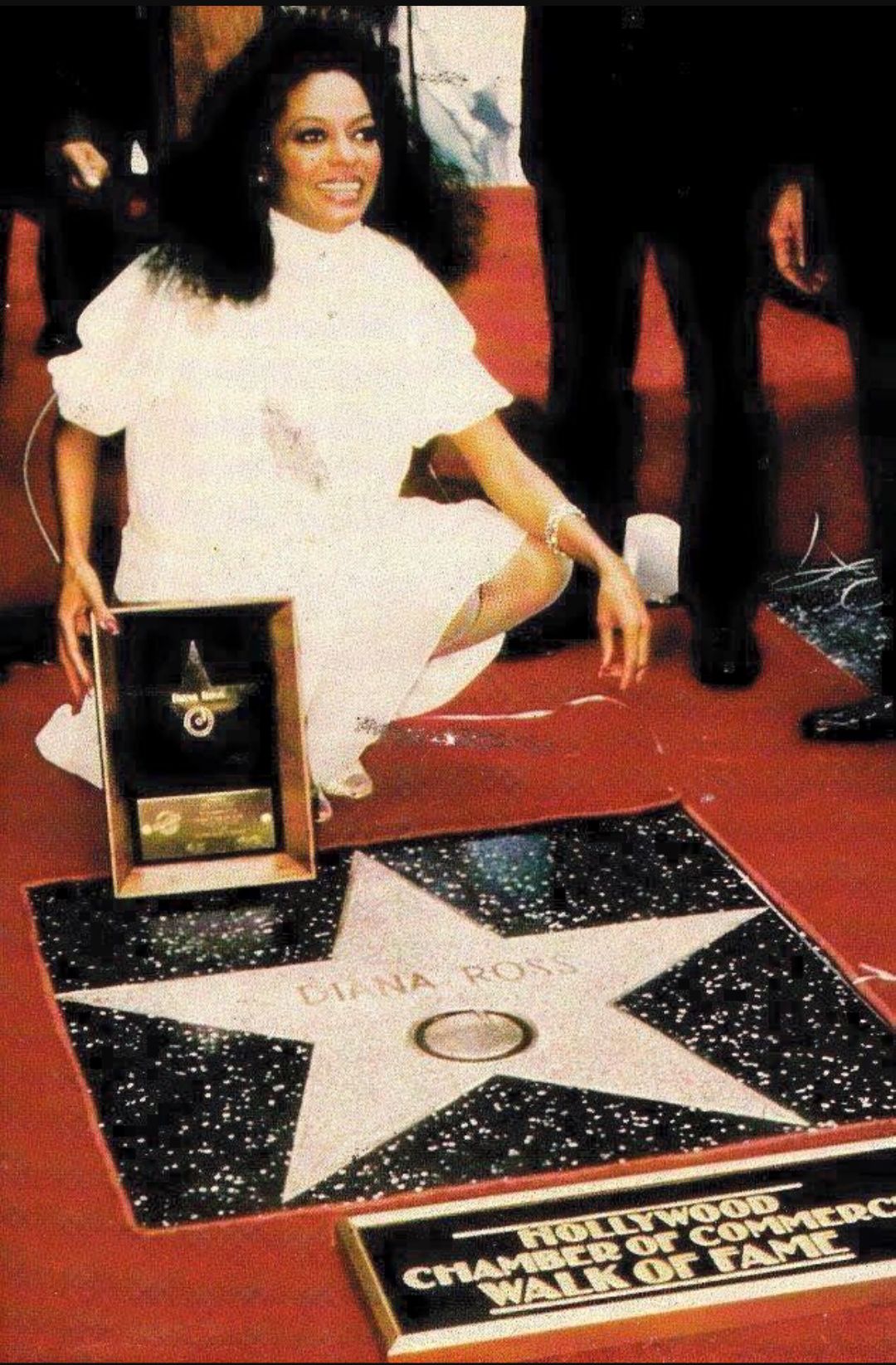
The entertainment world, for all its glamour and grand pronouncements about “the show must go on,” is also a crucible of clashing personalities, unyielding egos, and very firm boundaries. While we often imagine stars as consummate professionals, ready to perform under any circumstance, history is replete with instances where individuals drew a very clear line in the sand, refusing to share a stage, a spotlight, or even the most private of backstage sanctuaries with someone they simply couldn’t stand, or a concept they fundamentally rejected. This isn’t just about minor spats; these are often epic standoffs that have shaped careers and cemented legacies.
The concept of “sharing a dressing room” is more than just literal proximity; it’s a metaphor for collaboration, mutual respect, and a willingness to operate within shared professional boundaries. But what happens when that willingness completely evaporates? When the very idea of co-existing, even for a brief moment in the name of entertainment, becomes an absolute non-starter for a legendary performer? We’re diving deep into some truly remarkable tales where stars, for a multitude of reasons, from bitter feuds to unyielding artistic principles, simply said “no.”
From the raucous world of rock and roll tours to the hallowed halls of Saturday Night Live and the intensely personal space of a podcast studio, these narratives reveal the raw human drama behind the polished veneer of celebrity. They underscore that even the biggest names have their limits, their non-negotiables, and sometimes, the only way to express them is through an outright refusal to share the space, whether it’s a physical room, a concert stage, or a virtual microphone. Prepare to pull back the curtain on these unforgettable moments where shared spaces became battlegrounds of will.

1. **Sully Erna and Nikki Sixx: When Tours Become Turmoil**The rock and roll circuit is famously a tight-knit community, but it’s also a hotbed of intense personalities and even hotter feuds. One of the most protracted and publicly aired conflicts involved Godsmack frontman Sully Erna and Mötley Crüe bassist Nikki Sixx, a rivalry that ignited with remarkable ferocity in 2009. The catalyst for this backstage drama was the Crüe Fest 2 tour, an environment where, according to reports, Godsmack felt distinctly unwelcome. Godsmack drummer Shannon Larkin elaborated on these frustrations in a 2011 interview with “Interviews From the Edge,” specifically pointing to how Crüe’s security personnel treated Godsmack as the root cause of their discontent.
This simmering animosity boiled over in 2010 with the release of Godsmack’s track, “Cryin’ Like a B****.” While Larkin initially conceived the song title after witnessing former NFL quarterback Philip Rivers’ emotional display during a game, it was Erna who penned the lyrics, which almost immediately sparked rumors of being a direct jab at Sixx. Erna himself remained conspicuously tight-lipped, neither confirming nor denying these speculative whispers. However, Larkin, in a conversation with Wyoming radio station Rock 96.7, was more candid, admitting that “certain lines were certainly directed at Nikki,” adding fuel to the fire that this was more than just a coincidence; it was a carefully aimed lyrical missile.
The bad blood between Sixx and Erna then entered a phase of uneasy quietude, only to erupt once more with renewed vigor in 2014. The catalyst this time was Sixx himself, who took to X (then known as Twitter) to assert that Godsmack had “begged” to appear on his radio show, presumably to promote their new album. This public jab from Sixx not only reignited old grievances but also added a layer of condescension, suggesting Godsmack was desperate for his platform. This accusation undoubtedly stung, pulling the two musicians back into the public arena of their ongoing dispute.
The negative sentiment from Sixx didn’t merely linger; it escalated dramatically. He utilized his own radio show as a platform to declare a startling ultimatum, stating, in part, “There’s probably 15 festivals that Mötley Crüe is headlining, and if Godsmack’s on ’em, we’re not doing them” (via Loudwire). This wasn’t just a personal slight; it was a professional blacklist, a complete refusal to share *any* major festival stage with Godsmack, effectively forcing a professional separation. As if to seal the deal on any chance of reconciliation, Erna, during a 2015 episode of The Jasta Show, unleashed a barrage of scathing insults upon Sixx, calling him “a d***” and accusing him of treating “people like s***,” among other colorful insults. While the overt feud has quieted over the last decade, there are absolutely no indications of an official truce, suggesting that their refusal to share a space, be it a tour, a radio show, or a festival, remains firmly in place.

2. **Paris Hilton: The Sketch Refusal and the Locked Dressing Room Door**When Paris Hilton was slated to host Saturday Night Live in 2005, the anticipation, and perhaps some trepidation, was palpable. Tina Fey, a seasoned SNL writer and performer, offered a particularly blunt assessment of Hilton during an interview with Howard Stern, famously declaring, “She’s a piece of ,” and further lambasting her as “so dumb, so proud of how dumb she is.” Such an unvarnished opinion from a show veteran set a telling backdrop for Hilton’s time as host, hinting at the behind-the-scenes tensions that would soon become legendary.
Legendary SNL writer Jim Downey crafted a sketch that Fey herself described as “very fun,” a comedic premise seemingly tailor-made to playfully address Hilton’s public image. The sketch proposed that Lorne Michaels, the venerable producer of SNL, was supposedly completely unaware that Hilton had a tape, only discovering this pivotal piece of information at the eleventh hour. In a moment of mock outrage, Michaels would have supposedly declared, “You can’t host the show! We have standards here!” a line brimming with satirical irony given Hilton’s undeniable fame at the time.
The humor, of course, was rooted in the undeniable truth that Hilton’s tape was, for many, the very reason she had ascended to a level of celebrity significant enough to warrant an SNL hosting gig. However, Hilton apparently did not appreciate this particular brand of self-aware satire. According to Fey, Hilton’s reaction was swift and absolute: she not only refused to participate in the sketch but took her protest a step further, locking herself in her dressing room. This dramatic act effectively created an unbreachable barrier, a stark refusal to engage with the material or, by extension, the production team’s comedic vision, leading Fey to exclaim in disbelief, “Nobody does that!”
Instead of embracing the proposed satirical take on her public persona, Hilton reportedly attempted to steer the comedic direction towards others. Fey recounted that Hilton pitched alternative sketches where she could lampoon other women she “hated,” offering suggestions like, “You should write a sketch where I play Jessica Simpson, and she’s fat.” This revealing insight into Hilton’s thought process underscored her clear preference to deflect humor onto perceived rivals rather than sharing the comedic space by poking fun at herself, further emphasizing her reluctance to share the spotlight on terms dictated by the show.

3. **Donald Trump: The Refusal to Be a ‘Sucker’ (or a Stump)**Even for someone as famously comfortable in the spotlight as Donald Trump, there were limits to what he was willing to participate in during his 2015 hosting gig on Saturday Night Live. SNL writer Bryan Tucker recounted a specific instance to the Huffington Post, detailing a dress-rehearsal sketch that Trump ultimately refused to let air. This particular refusal offered a glimpse into Trump’s image consciousness and his boundaries regarding self-parody, particularly when it involved a portrayal he deemed unflattering or weak.
The sketch in question was a satirical take on “The Giving Tree.” In this version, Trump was cast as a neighboring tree observing the original Giving Tree, which, over time, became completely chopped down and reduced to a stump after generously giving all its fruit to a boy. Trump’s character, the neighboring tree, would then deliver lines such as, “You’re a sucker, you’re getting played, you should not be giving things to these people,” directly commenting on the perceived foolishness of generosity. It was a clear comedic commentary on a particular mindset.
However, a crucial physical aspect of the sketch proved to be Trump’s undoing. To play the part of the tree, Trump “had to stand in a tree with his face looking out of the hole of this tree.” This specific visual, positioning him literally as a part of a tree with his face peering out, did not resonate well with the host. Tucker observed, “he did not like that. I don’t think he enjoyed looking like a tree. He was not into it and it showed, and it did not get a lot of laughs” during the rehearsal, indicating his discomfort impacted the performance and reception.
This was a subtle, yet firm, refusal by Trump to fully immerse himself in a comedic role that he felt compromised his image. The essence of the sketch implied a form of vulnerability or even foolishness that he was unwilling to embody, especially when combined with a physical depiction he found unappealing. His decision to pull the sketch, therefore, constituted a refusal to share the comedic space on terms that made him appear “a sucker” or merely “a tree,” demonstrating a clear boundary when it came to how he was presented to the public, even within the context of satire.

4. **Ruth Gordon: The “No Way!” to Playing Dead**Picture this: an incredibly accomplished actress, an octogenarian at the peak of her later-career renaissance, gracing the hallowed stage of Saturday Night Live as a host. This was the scene when the legendary Ruth Gordon, at 80 years old, brought her inimitable charm and wit to the live comedy institution. For someone of her stature and age, one might assume a certain level of deference, but even for a seasoned pro like Gordon, there was a comedic concept pitched that proved to be a bridge too far, leading to an understandable, yet firm, refusal.
The sketch in question, penned by writers Al Franken and Tom Davis, was designed to be a piece of darkly humorous absurdity. Its central conceit involved Gordon’s character unexpectedly “keeling over dead halfway through” the segment. While SNL has always prided itself on its envelope-pushing and sometimes morbid humor, this particular scenario struck a very different chord with the veteran actress. It wasn’t merely a joke; for an 80-year-old, the idea of publicly simulating one’s own demise likely felt less like playful satire and more like an uncomfortably close-to-home prophecy.
Gordon’s reaction was reportedly an immediate and unequivocal “No way!” to participating in the morbid sketch. This wasn’t a diva tantrum or a battle of egos; it was a deeply personal boundary drawn by an individual who, despite her comedic prowess, found the premise simply too much. Her refusal highlights a fundamental aspect of performance that sometimes gets overlooked: the human element. Performers are not merely puppets; they bring their own experiences, sensitivities, and limits to their craft.
The story of Ruth Gordon’s stand serves as a memorable reminder that even in the cutthroat world of live television, where “the show must go on” is practically scripture, there are lines that even the most dedicated performers will not cross. Her decision wasn’t just about a sketch; it was a powerful assertion of personal dignity and a refusal to embody a concept that was, for her, beyond the realm of acceptable humor, proving that some boundaries, especially intensely personal ones, are non-negotiable, even for an icon.

5. **John Belushi: The Tiny Shorts and the “Thumbs-Down”**Long before he became a comedic titan of film and television, immortalized by his roles in *Animal House* and *The Blues Brothers*, John Belushi was a foundational pillar of the original Saturday Night Live cast. Known for his raw, unbridled energy and fearless physical comedy, Belushi seemed like a performer who would tackle any challenge thrown his way. Yet, even this comedic powerhouse harbored a deeply personal insecurity that led him to draw a line in the sand, refusing to participate in certain sketches, particularly those that touched upon his body image.
One such instance, vividly recounted in the behind-the-scenes narratives of SNL, involved a sketch that ultimately saw fellow cast member Dan Aykroyd step into the role. In the film *Saturday Night*, Aykroyd begrudgingly portrays a “cutie pie” character, subject to catcalls from a group of female construction workers, all while clad in notoriously tiny shorts. This role, however, wasn’t initially conceived for Aykroyd. Writers Rosie Shuster and Anne Beatts had specifically written the part with Belushi in mind, envisioning him as the beefcake in the revealing costume alongside Lily Tomlin.
Belushi’s response to the prospect of donning those minuscule shorts was an emphatic “big thumbs-down.” The reason was simple, yet profound for him: he was profoundly self-conscious about his weight. The idea of appearing on live national television in attire that would accentuate his body in a way he found unflattering was a non-starter. This wasn’t just a fleeting discomfort; it was a firm boundary rooted in personal vulnerability, a rare glimpse into the insecurities of a performer so often seen as larger-than-life and impervious.
Moreover, this wasn’t an isolated incident of Belushi drawing a hard line. According to *Saturday Night: A Backstage History of Saturday Night Live*, Belushi, who was also known to express frustrations about the show’s female writers, consistently refused to appear in other sketches penned by Shuster and Beatts. Perhaps most notably, he was the original choice for the character of Todd in the iconic “Nerds” sketches. This refusal paved the way for Bill Murray to take on the role, which subsequently became one of his most beloved and signature characters. Belushi’s repeated reluctance to engage with certain material, especially when it involved his physical appearance or specific writers, underscores how even comedy legends have their limits when it comes to sharing the stage on terms they find personally or professionally unpalatable.

6. **Chyna: The WWE Legend’s Rumored Dressing Room Divide**Within the annals of World Wrestling Entertainment, few names resonate with the revolutionary impact and sheer charisma of Chyna. “The Ninth Wonder of the World,” as she was famously known, wasn’t just a female wrestler; she was a genuine game-changer, shattering gender barriers by competing against and often dominating male superstars, even holding the Intercontinental Championship twice – a title traditionally reserved for men. Her groundbreaking career, which spanned from 1997 to 2001, left an indelible mark on the Attitude Era, paving the way for future generations of female athletes. However, even a trailblazer of Chyna’s magnitude reportedly navigated a complex landscape of backstage dynamics, including intriguing rumors about her specific preferences regarding shared spaces.
Former WWE Superstar Maven recently offered a candid glimpse into the alleged “heat” Chyna encountered behind the scenes, shedding light on a particular rumor that has long circulated among wrestling insiders. According to Maven, “Always would circulate backstage that she would not want to share a dressing room with some of the other girls.” This wasn’t a concrete fact he could personally confirm, as he clarified, “Again, I don’t know that to be true. That’s just what the rumor was, and what I heard.” Nevertheless, the very existence and persistence of such a rumor, even if unverified, speak volumes about the unique, perhaps isolated, position Chyna held within the female roster.
This alleged refusal to share a communal dressing room with her female peers could stem from a variety of factors. Perhaps it was a manifestation of her unique role, often bridging the gap between the men’s and women’s divisions. It might have been a way to maintain a distinct persona, or perhaps a simple personal preference for privacy in a high-pressure environment. Regardless of the underlying reason, if the rumor held truth, it presented a striking example of a performer drawing a very literal line when it came to shared professional space, distinguishing herself even within her own gender’s locker room.
Maven’s account further elaborated on other sources of “heat” Chyna faced, primarily revolving around her revolutionary in-ring work. He noted that “the fact that she was out wrestling guys, that did not sit well with many backstage.” This highlights the significant pushback Chyna endured simply for existing outside traditional gender roles in wrestling. However, he emphasized a crucial counterpoint: “But once again, this is Vince’s baby, it’s not for us to make the decision.” This statement underscores that Chyna’s trailblazing path was ultimately sanctioned and protected by WWE chairman Vince McMahon, allowing her to defy conventions despite potential internal resistance.
Chyna’s legacy as a revolutionary figure is undeniable. Her contributions to professional wrestling, including two Intercontinental Championship reigns and a Women’s Championship, cemented her status as an icon. Following her tragic passing at 46 in 2016, fans overwhelmingly called for her proper recognition, culminating in her induction into the WWE Hall of Fame in 2019 as a member of the legendary D-Generation X. The whispers of her dressing room preferences, whether fact or fabrication, add a fascinating, albeit unconfirmed, layer to the story of a woman who consistently defied expectations and, in doing so, changed the entire game.

7. **Oscar De La Hoya and Joe Rogan: The Podcast Refusal**In the sprawling, interconnected landscape of contemporary media, few platforms command as much attention and generate as much buzz as “The Joe Rogan Experience.” Helmed by the charismatic long-time MMA analyst and stand-up comedian, it’s widely regarded as the most influential podcast globally, a veritable digital coliseum where Rogan engages in extensive, unscripted conversations with an eclectic array of guests. From fellow comedians and elite mixed martial artists to provocative political figures and thought leaders, Rogan’s microphone is usually open to a broad spectrum of voices. Yet, even on a platform celebrated for its wide-ranging discussions, there appears to be one legendary athlete who can’t secure an invitation – or so he passionately claims.
That legendary athlete is none other than the “Golden Boy” himself, boxing icon Oscar De La Hoya, who has publicly called out Rogan, accusing him of an outright “refusal” to allow him to appear on the immensely popular podcast. De La Hoya’s accusations were sharp and direct, pulling no punches as he suggested a deeper, more personal motive behind the alleged snub. “Joe, it must be in your contract to say ill on me and not say one nice word about me,” De La Hoya stated, implying a contractual obligation or a strong bias from Rogan’s side. Adding another layer to his allegations, De La Hoya pointed to his ongoing public feud with UFC President Dana White, suggesting White’s influence might be at play: “I mean, I get it daddy Dana [White] will not let you have me on the podcast,” he continued, painting a picture of Rogan potentially being beholden to White’s preferences.
Not one to back down, De La Hoya then pitched a bold, attention-grabbing proposition, convinced it would be a landmark episode for the podcast, which has been airing since 2009. “Let me propose something [and] this will be the highest-rated show you’ll ever do,” he declared, laying out his vision. His idea was a high-stakes, three-way dialogue: “Have me and your daddy Dana on the podcast together. You can moderate the podcast, so two against one. And I’m fine with that because I’m an open book,” he offered, showcasing a willingness to confront his rival on Rogan’s turf, seemingly unfazed by the potential imbalance, and ready to share the virtual microphone even under adversarial conditions.
However, Rogan’s own past public remarks about De La Hoya provide strong indications of why such an appearance remains elusive. Rogan has not only expressed a less-than-flattering opinion of the boxing icon, reportedly referring to him as being “a little off the rails these days,” but has also openly mocked De La Hoya’s physical appearance. “Why has Oscar De La Hoya got fake abs?’ Rogan famously inquired during a segment, adding, “You seen that? Oscar De La Hoya has got some fake abs. Something’s going on, man.” He didn’t stop there, offering a critical anatomical assessment: “The thing is, his abs don’t match his chest or his arms. Look how defined his abs are, like they even when he’s sitting there. It’s like the Liver King.” These publicly aired criticisms and personal jabs from Rogan suggest a genuine reluctance, bordering on outright refusal, to welcome De La Hoya onto his platform. It highlights how personal animosities, perceived slights, and even aesthetic observations can lead to an effective ban from one of the most significant stages in media.
From the chaotic energy of rock and roll feuds that shut down festival stages, to the principled stands taken on Saturday Night Live’s iconic set, and the subtle, yet powerful, refusals in dressing rooms and digital studios, these narratives offer a captivating deep dive into the human element of celebrity. They brilliantly reveal that even the most legendary performers, for all their dazzling talent and carefully crafted public personas, are fundamentally people with their own anxieties, unbreakable principles, and often, very strong opinions on who they are willing – or adamantly unwilling – to share a space with. These aren’t just mere anecdotes; they are profound insights into the intricate, frequently dramatic, and undeniably entertaining machinations of show business, where drawing a line in the sand can sometimes become the most memorable and revealing performance of all.




